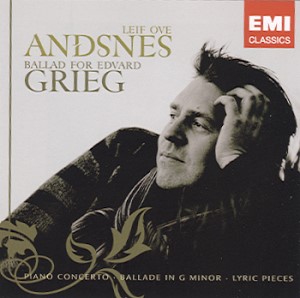|
The Sound
I tested the Usher CP-6381s with a McIntosh
MCD201 SACD player, Lamm L2 Reference preamplifier, and McIntosh MC1201
power amplifiers. Cables were Legenburg.
I placed the speakers about 8 feet apart, toed
in slightly towards the listening position, several feet out from the side
and rear walls.
|
 |
It's a bit early to be using Christmas music for a review,
but we just received this new Telarc release of
Nutcracker (SACD-60674),
and I love the music, so I thought, "What the heck."
"Overture": violins and flute with triangle which was easily
heard in the background. Clear, detailed, no strange
harmonics. Very natural timbre. No tizziness or extra
sibilance.
"Scene 2": Full orchestra; string bass very tight, not boomy
at all. "Scene 9": Piccolo and violins together. Easily
separated.
|
|
Ballad for Edvard Grieg (EMI Classics
0-94639-43992-8): "Piano Concerto in A minor": The
opening bars of this piece are recognized by everyone,
whether big music fans or not. The piano notes span from
top to bottom, and each was near perfectly rendered. |
 |
|
 |
Ballet Favorites (Telarc SACD-60625): "Fanfare to La
Peri": French horns and trumpets playing together, and
easily distinguished.
"Cortege de Bacchus from Act III, Sylvia": Full orchestra
blasting away, Tympani were still tight.
"Sabre Dance from Gayane": Xylophone and woodwinds playing
together. Separate from one another. |
|
Evgeny Kissin: "Schumann Piano Concerto"
(EMI Classics 0-946-3-82879-2-6): Again,
thunderous piano at the opening. Tweeters didnít
compress. When orchestra and piano were playing
together, the piano was not buried in the other
instruments.
|
 |
In sum, the CP-6381's strong points are neutral
timbre, clarity, and tight bass. If there is a weak point, it
would be the lack of deep bass (20 Hz - 30 Hz). With an
enclosure of this size, I would have preferred it to have
a larger bass driver, say 12" to 15", mounted on the side to
maintain the narrow profile on the front. But, since they are
the way they are, just use a good subwoofer to add the depths of
the lowest octave.
Go to Part III.
Terms and Conditions of Use
|